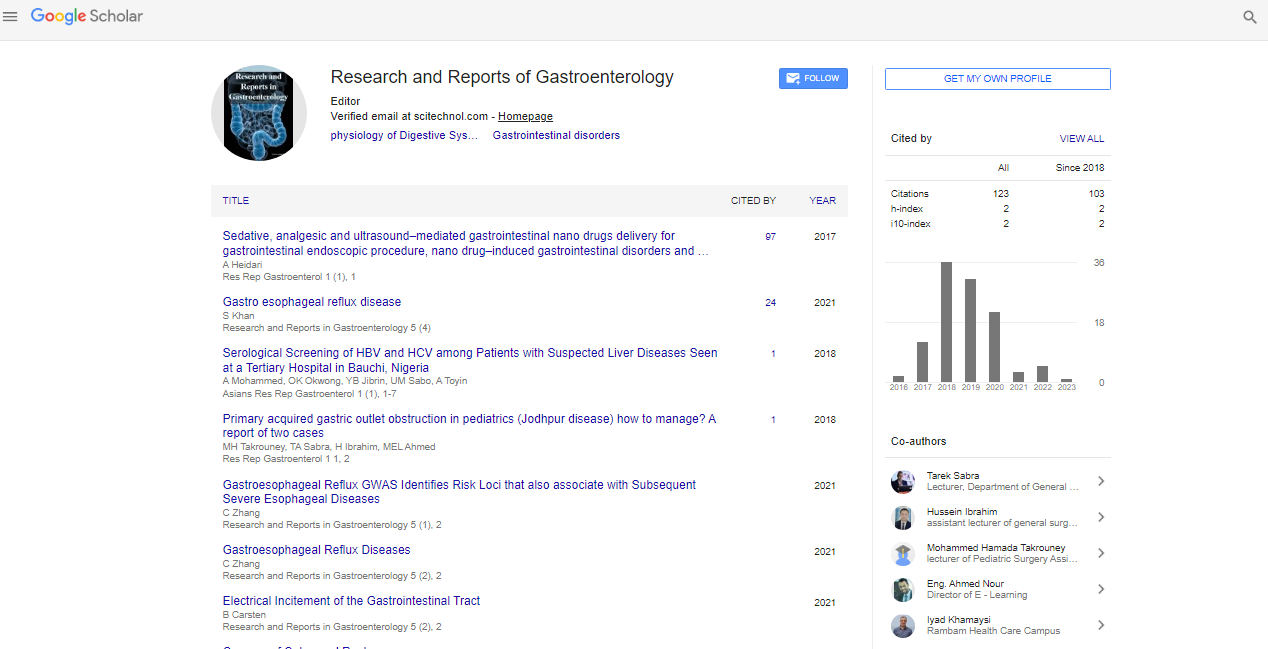Clinical Image, Res Rep Gastroenterol Vol: 2 Issue: 1
Gastric Schwannoma: A Rare Case with Preoperative Diagnosis by EUS-FNB
1Invasive Endoscopy unit, Department of Gastroenterology and Hepatology, Rambam Health care Campus, Rappaport Faculty of Medicine, Technion-Israel Institute of Technology, Israel
2Cytopathology Unit, Department of Pathology, Rambam Health care Campus, Rappaport Faculty of Medicine, Technion-Israel Institute of Technology, Israel
*Corresponding Author : Iyad Khamaysi
Director, Invasive Endoscopy unit, Department of Gastroenterology and Hepatology, Rambam Health care Campus, Rappaport Faculty of Medicine, Technion-Israel Institute of Technology, Israel
Tel: +972 4 777 2850
E-mail: k_iyad@rambam.health.gov.il
Received: December 01, 2017 Accepted: January 18, 2018 Published: January 24, 2018
Citation: Khamaysi I, Malkin L (2018) Gastric Schwannoma: A Rare Case with Preoperative Diagnosis by EUS-FNB . Res Rep Gastroenterol 2:1
Abstract
Schwannomas are benign neurogenic tumors. Gastric schwannomas is the most common digestive tract. It account only for 0.2% of all gastric tumors and principally involve the submucosa and muscularis propria [1]. The preoperative differentiation between gastric schwannomas and gastrointestinal submucosal tumors Figure 1: EUS images (A, B) and pathologic findings (C-H) of EUS-FNB. The tissue was composed of broad bundles of elongated cells (C, H&E stain). In immunohistochemistry (D-H), the tumor strongly stains for S-100 (G) and moderately positive for SOX-10(H). Staining for CD-117(D), DOG-1(E) and smooth muscle desmin (F) are negative. (GISTs) can be difficult. None of the imaging studies have shown any distinct features unique to these neoplasms [2]. Final diagnosis of gastric schwannomas is made by surgical pathology. Both EUS-guided fine needle aspiration and EUS-guided biopsy (EUSFNB) can be used for tissue sampling. However only Endoscopic Ultrasound Guided Fine Needle Biopsy (EUS-FNB) allows core biopsy sufficient for histopathologic processing. With the advent of immunohistochemical staining techniques and ultrastructural evaluation, it is now possible to identify these neoplasms based on their distinct immunophenotypes [3].
Keywords: Gastric Schwannoma; Digestive tract
Introduction
Schwannomas are benign neurogenic tumors. Gastric schwannomas is the most common digestive tract. It account only for 0.2% of all gastric tumors and principally involve the submucosa and muscularis propria [1]. The preoperative differentiation between gastric schwannomas and gastrointestinal submucosal tumors (GISTs) can be difficult. None of the imaging studies have shown any distinct features unique to these neoplasms [2]. Final diagnosis of gastric schwannomas is made by surgical pathology. Both EUS-guided fine needle aspiration and EUS-guided biopsy (EUSFNB) can be used for tissue sampling. However only Endoscopic Ultrasound Guided Fine Needle Biopsy (EUS-FNB) allows core biopsy sufficient for histopathologic processing. With the advent of immunohistochemical staining techniques and ultrastructural evaluation, it is now possible to identify these neoplasms based on their distinct immunophenotypes [3].
Herein we report a very rare case of a gastric schwannoma diagnosed preoperatively by EUS- FNB. A 62-year old woman with iron deficiency anemia was referred to endoscopic evaluation. Gastroscopy revealed a 2-cm submucosal antral mass lesion with normal overlying mucosa. A subsequent contrast-enhanced CT scan showed a homogenous mass, measuring 2.2 cm and arising from the antrum of the stomach. EUS was performed. A 2.2 cm subepithelial hypoechoic homogenous mass was shown, originating from the muscularis propria (Figure 1). EUS-FNB with 22G needle (ACQUIRE, Boston Scientific, Natick, MA, USA) was done (Figure 1). The tissue from the tumor was composed of broad chunks of spindle neoplastic cells that were immunoreactive with S-100 protein and SOX-10, but lacked immunoreactivity with CD-117, DOG-1, smooth-muscle desmin (Figure 1). The histopathologic features and immunohistochemical staining pattern were consistent with a gastric schwannoma. Due to the difficulty of establishing a definite preoperative diagnosis of gastric schwannoma, surgical resection should be considered in patients with ill-defined subepithelial lesions. In this case, relying on the excellent prognosis for this type of neoplasms, a conservative management was undertaken.
Figure 1: EUS images (A, B) and pathologic findings (C-H) of EUS-FNB. The tissue was composed of broad bundles of elongated cells (C, H&E stain). In immunohistochemistry (D-H), the tumor strongly stains for S-100 (G) and moderately positive for SOX-10(H). Staining for CD-117(D), DOG-1(E) and smooth muscle desmin (F) are negative.
References
- Zhong DD, Wang CH, Xu JH, Chen MY, Cai JT (2012) Endoscopic ultrasound features of gastric schwannomas with radiological correlation: A case series report. World J Gastroenterol : 7397-7401.
- Mohanty SK, Jena K, Mahapatra T, Dash JR, Meher D, et al. (2017) Gastric GIST or gastric schwannoma- A diagnostic dilemma in a young female. Int J Surg Case Rep 28: 60-64.
- Sandhu DS, Holm AN, El-Abiad R, Rysgaard C, Jensen C, et al. (2017) Endoscopic ultrasound with tissue sampling is accurate in the diagnosis and subclassification of gastrointestinal spindle cell neoplasms. Endosc Ultrasound 6: 174-180.
 Spanish
Spanish  Chinese
Chinese  Russian
Russian  German
German  French
French  Japanese
Japanese  Portuguese
Portuguese  Hindi
Hindi 
